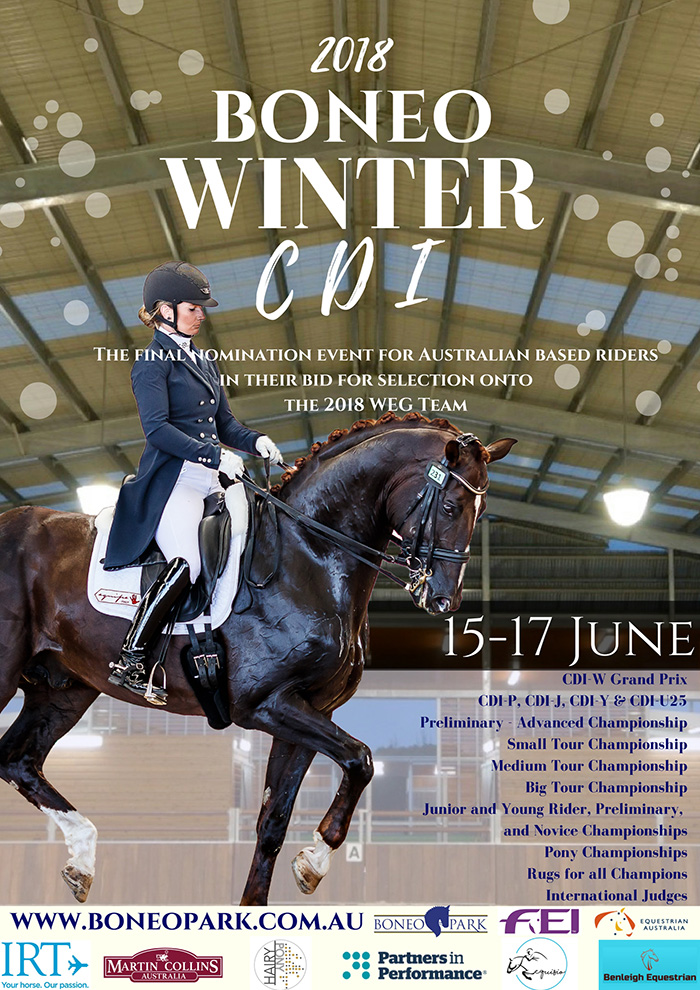
Rebecca Ashton reports on the Sydney CDI Freestyle and tries to make sense of the latest EFA dressage selection policy… photos Rebecca Ashton and Stephen Mowbray

With the WEG selection policy going through a change supposedly a month ago – did I miss something or was it only made public a few days ago? – the Sydney CDI went from being a nominated selection event to a qualifier….or both. Why it wasn’t included in the original qualifying list I guess we’ll never really know. The fact that the qualifying period has been extended, is possibly quite a positive, and even an exciting development, so why EA has chosen to be publicly a bit ‘secret squirrels’about the change is perhaps puzzling.
So now we still have eleven combinations in contention instead of four. As of the old cut-off date for the preliminary qualifying period, 30th April, where combinations needed to have two scores above 69%, one having been awarded this year. Under that original policy we had four in contention for selection: Mary Hanna and Boogie Woogie, Kristy Oatley on Du Soleil, Brett Parbery on Weltmieser and Shannan Goodwin on Aristede. The selection committee obviously thought this didn’t give them enough space, or at least input, to choose a team, and as we know with horses, two and a half months is a long time and things can go wrong. They decided they would prefer a few more combinations from which to choose. The announcement date was, and still, is on 18th July although there was a bit of tooing and frooing about this too…
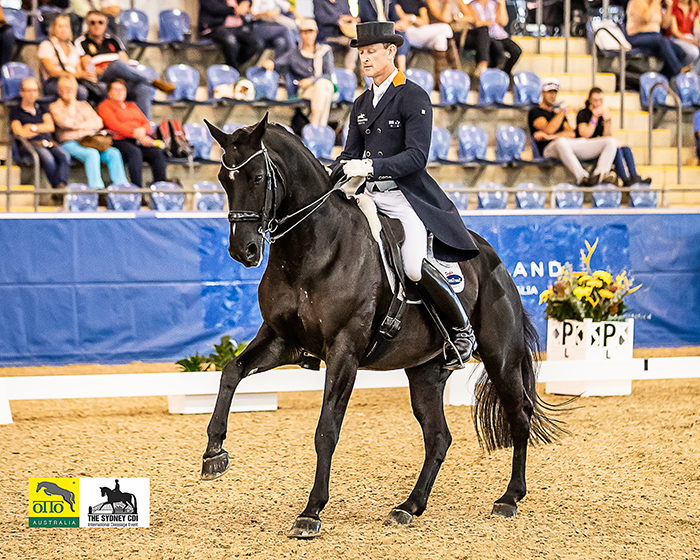
Brett Parbery and DP Weltmieser in action. PICTURE: Stephen Mowbray.
Now all eleven combinations in contention get until 15th July to prove their worth, with the required two remaining nominated events in Australia – one of which was Sydney – now acting as preliminary qualifying events as well. The European riders still have five shows to choose from, but two of them (Wiesbaden and Compiegne) are on the same weekend. Kristy and Du Soleil are perhaps the most qualified combination with four scores above 69%, but she will still have to ride at two of the five nominated shows.
Unfortunately no one scored the required 69% or above mark at Sydney, so I’m sure Boneo in June will be quite an exciting CDI for the six home-based riders vying for a spot in the team. Brett Parbery on Susan Duddy’s DP Weltmieser, who has already qualified for WEG selection, won the Sydney Otto Sport Australia FEI Grand Prix CDI 3* on 68.804%, just in front of Judy Dierks on Diamond Star who came in on 68.13%. In fact, the top four horses in the class were on a 68% score, so it was tight at the top. Matthew Dowsley was third on AEA Prestige, and Deon Stokes and Royal Oak II took fourth spot. The Grand Prix in Sydney is usually run outdoors at this event, but with the new indoor surface, it was decided to put it indoors. Was this fair for a nominated show?
more follows below
Brett chose to enter Rabbit in just the Grand Prix, as the horse has been struggling to get over a virus in recent months. He keeps getting stronger, but Brett is sensibly keeping his workload to a minimum and keeping competition to selection relevant events. Other WEG hopeful Alexis Hellyer with Bluefields Floreno, who finished 5th in the Grand Prix, had to scratch from the Special and Freestyle after her stallion pulled up sick. We wish ‘Flo’ a speedy recovery as the combination has really been a highlight at recent shows.
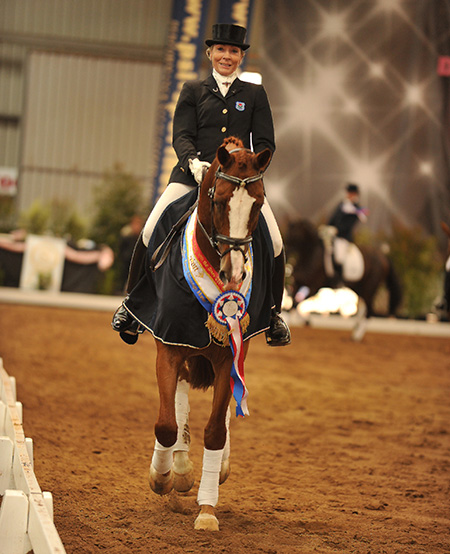
A star combination from the start, Judy and Diamond Star winning at DJWTS(tars) back in 2011 – now that’s a lot of stars…
The most consistent combination over the weekend was definitely Judy Dierks on Vicki Newham’s Diamond Star, who rode in all three tests and won the Special and the Freestyle. In her victory speech on Saturday night, Judy praised the new SIEC indoor surface, which has proved to be a hit with the riders (and the photographers can I add. It’s so much lighter and a better backdrop to the horses!). This combination is also in the WEG Eleven, but need their mandatory 69% from 2018. Hopefully we’ll see them down in Boneo strutting their stuff.
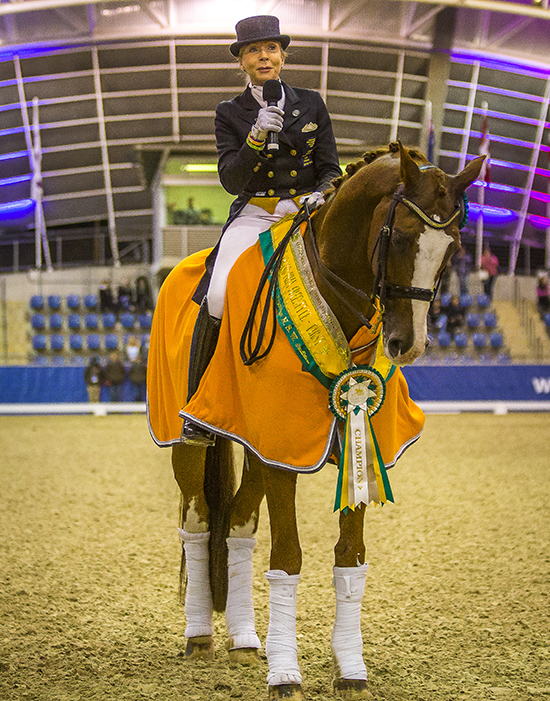 .
.
more follows
Are you going to be there to see our team at the WEG at Tryon in September? Plus all the other stars? Charlotte and her new ride? Sönke and Cosmo? The new young Danish star, Cathrine Dufour and the horse she has had since she was a young rider, Cassidy? Our Bronze Medal eventing team from Rio trying to go better? The show jumpers ? You can, but you need to book now!!
For information: ring 03 9926 3555 and ask for Georgia
or email: ouequestrian@organisationunlimited.com.au
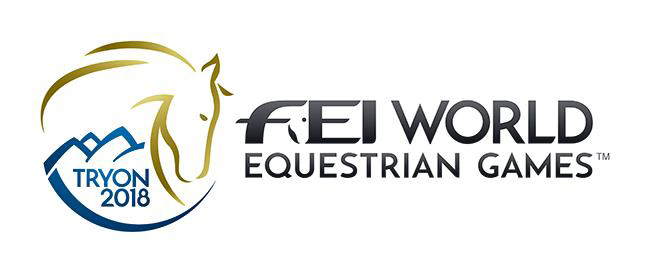
Deon Stokes and Royal Oak II are becoming a pair to watch at the top level, and took out second place in the freestyle with 71.315%. The black stallion continues to get stronger and more consistent and they were able to pip Shannan Goodwin and Aristede who scored 70.48% for third. Lisa Martin is back competing in the open ranks after the Para Olympics in Rio and seemed thrilled with her mare First Famous who has not only stepped up a level, but came fourth with 70.27%
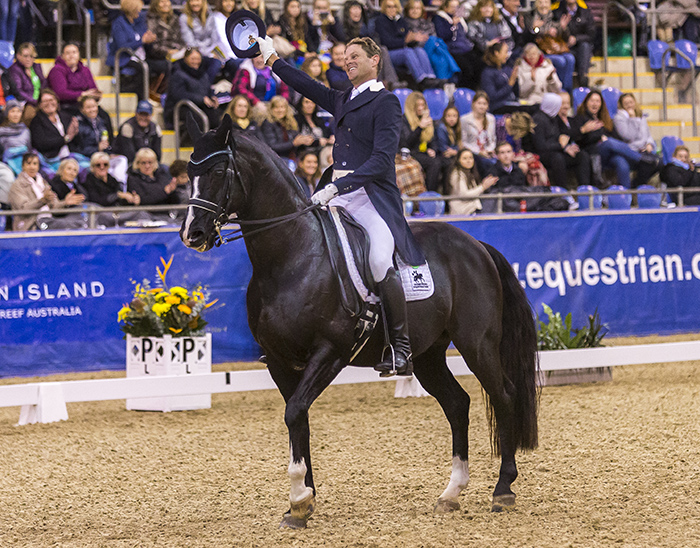
Second to Deon Stokes and Royal Oak 11
Another hit seemed to be the computerised Degree of Difficulty judging program for the Grand Prix Freestyle. Created by 5* German judge Katrina Wüst, it’s been around a few years now, and has been used with great success in the World Cup series and is slowly creeping into more and more shows. This year’s Sydney CDI was the first time the system has been used in Australia.
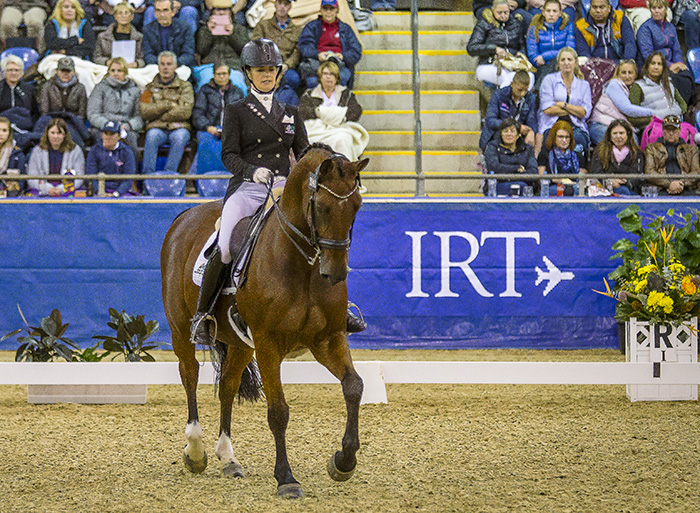
Shannan Goodwin and Aristede – every rider had time with the system designer
The system requires riders to submit a floor plan of their test prior to the competition. This is completed on a special interface provided by the FEI. The riders have to be know which areas of their test are considered to be beyond standard requirements. Then when they decide to include a movement, they have to note it on the floor plan. If the judge considers the movement well executed, they get extra marks, if not, they lose marks. You have to know that your test contains which difficult transitions, ‘particles’,‘combinations’and ‘joker’lines. It’s actually quite helpful because then you know your degree of difficulty mark prior to the test, which gives you the opportunity to tweak the test to get those extra little marks than can mean a ribbon, or a chance to compete overseas! It might seem a little complicated, but it’s really not, and every rider was allowed time with system designer Daniel Göhlin from Black Horse in Germany and representatives from SAP, who run the system. They made sure all tests were all inputted correctly. The system will be used at WEG so it was great for everyone to have a practice run.
more follows
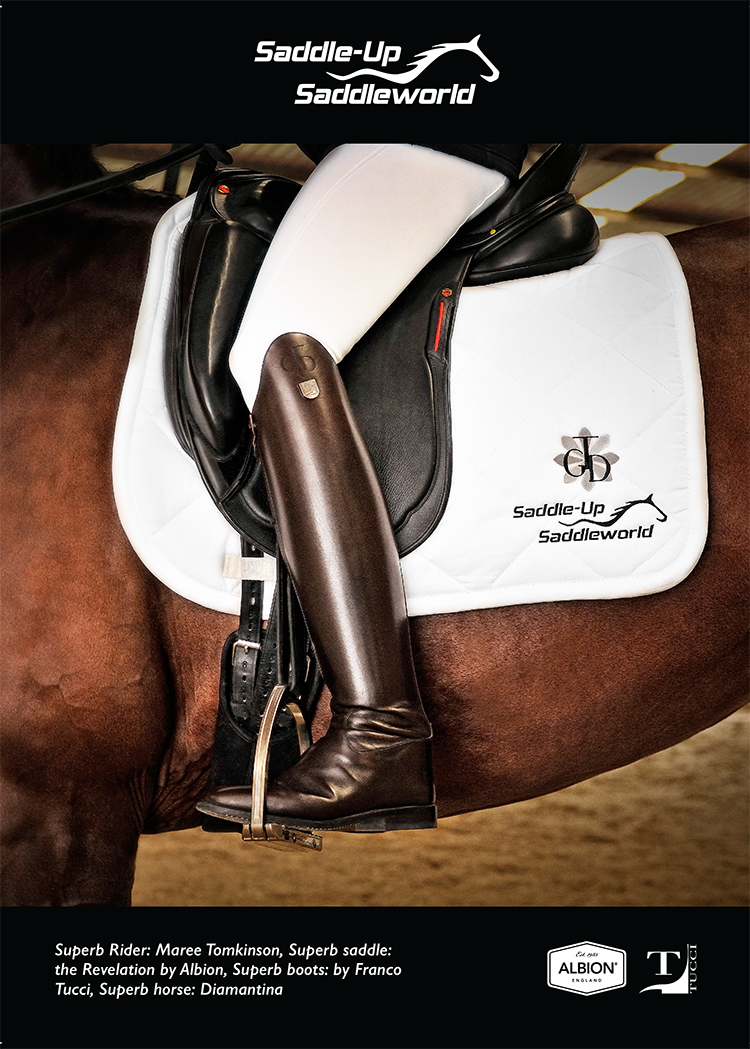
Saddle-fitting, made-to-measure Franco Tucci Boots, everything you need to compete at the top, from Saddle-Up Saddleworld.
Ring now and find out more: 03 9727 4000
Daniel was finishing off a degree in computer science when Katrina Wüst approached him to design the system. Being a successful German dressage rider himself helped create a rider-friendly platform. He’s put thousands of hours into its development and is still making small changes. Judges now input marks on IPads instead of laptops and as there is a live trend now, spectators can see how the marking is going because the rider’s test is already known. Daniel explains, “Before this the judges had to keep everything in mind, and at the end reflect on what they had seen. It is human nature that you might forget things, because there is so much going on. This makes it so much easier, and you have much more time to focus on music, choreography and things like that.”
The same company, which now employs seven people, is also responsible for spectator judging as well, and I have to say, the troops in the stands were pretty close to the judges on Saturday night. Brisbane based 5* judge Maria Schwennensen was the judge at C for the Freestyle and I spoke to her before the test about the new computerised element. It was the first time she had used the system. “I’ve been to a couple of workshops and I understand it, so I hope I get it right! It seems pretty straight forward, you have a completely different scoresheet to the normal one. As judges, we have to follow through the sequence of the pattern submitted by the riders, and they have to stick to it, and not go off on a tangent, or else we don’t know how to mark the test. We mark each movement as a normal test, between 1 and 10. Without the system we would do that on the side and then average it out, but we don’t take into consideration how easy or hard something is until after the test and we look at the artistic marks. So this system does it automatically as the points are set out for more difficult movements. But while we’re doing all these other things, we still have to remember other elements such as the rhythm, harmony, choreography and the music.”
“The scribe, e-scribe and judge all get a copy of the floor plan so I can either follow it myself, or just trust the scribe who will read out the movement, or combination of movements that is about to come up, and needs to be considered for degree of difficulty, and then she’ll say ‘combination finishing’and then I have to say whether I accept it i.e. the more difficult movement is executed, or don’t accept it. If you don’t accept it, it doesn’t get extra marks. It’s supposed to be far more consistent than what we usually do. I’m really excited to be judging under the new system.”
What does four-star judge from Norway, Trond Asmyr, think of it? “I’ve used it once before. I think it’s a great improvement for the sport. All dressage judging is slightly subjective, even though we have objective reasons. Now we have a system which takes some of that subjectiveness away. Anything we can do to improve the objectivity really is an improvement. I feel it’s a little bit more difficult to get an overall view of the performance because you are so concentrated on all the details. That’s just my feeling. But really, the system is amazing and it’s almost unbelievable that they’ve got this level of a professional system.”
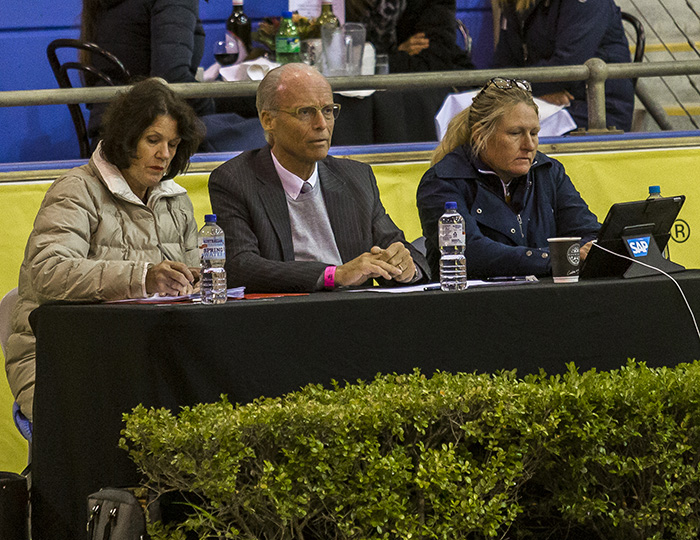
Trond in the judge’s seat
And while I had Trond, I asked him what his observations were from judging in Australia, “Not only the Grand Prix, the main improvement area would probably be to get the horses better in self-carriage and wake them up sometimes. Some are too awake but many could have a little bit more energy and through that develop the self-carriage.”
So from the WEG perspective, everyone now gets a bit of downtime for the final run into June and Boneo Park. In the meantime, we’ll be watching the European combinations to see how their nominated events go. The field is still wide open and the event at Boneo Park is going to be exciting.
Want to compete at the highest level? Breed your own star, go to www.ihb.com.au and find world class bloodlines, there’s new stallions available for 2018 – right here in Australia: www.ihb.com.au
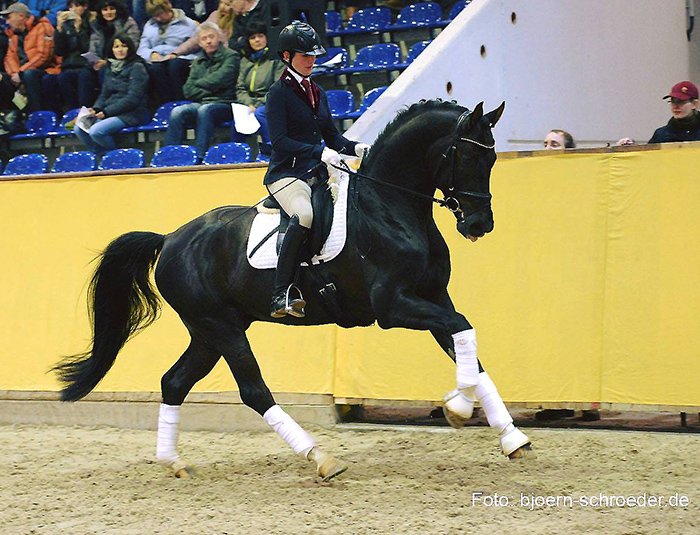
Ben Benicio
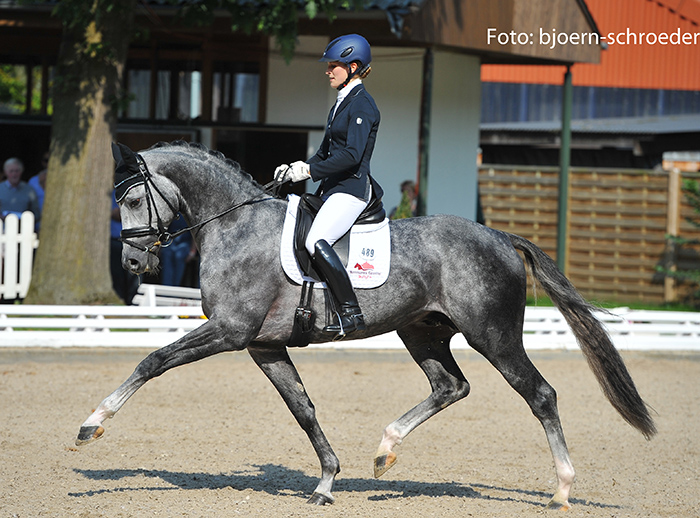
Belantis




